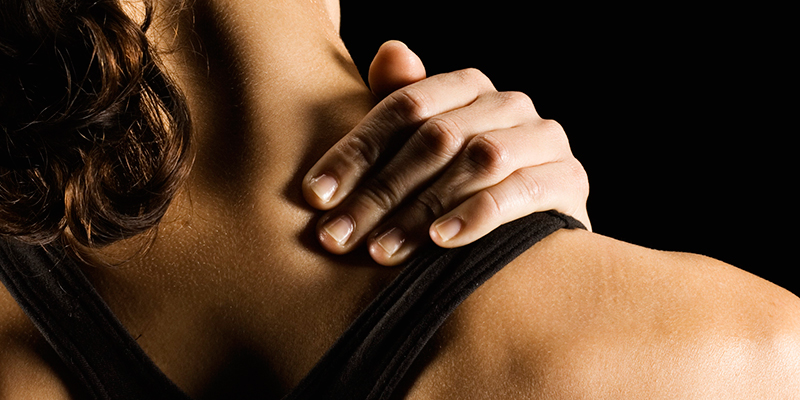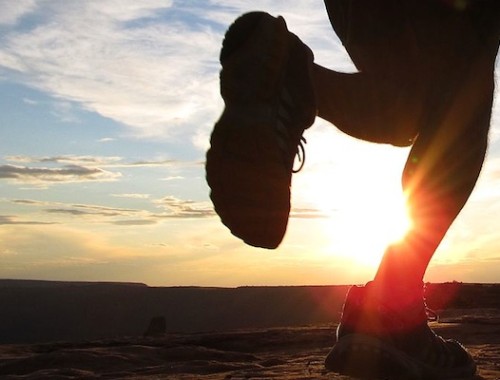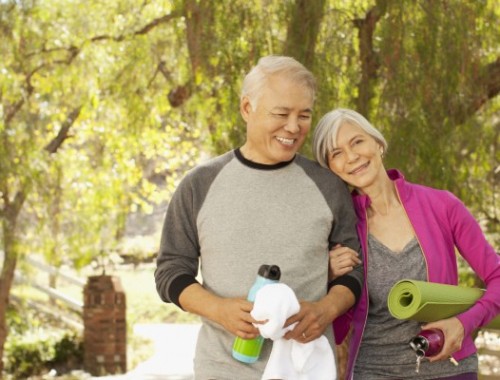The more sore you feel, the better your workout was, right? Actually, no! Being sore is not necessarily a sign of a good workout or required to see results at the gym. There’s a lot more to it. Here is everything you need to know about being sore.
1. Soreness is a normal response to exercise.
The technical term for that tender, sore feeling you get after a tough workout is delayed onset muscle soreness, or DOMS. During exercise, you are working skeletal muscle, which will swell a bit and feel sore to the touch post-workout. This is all a totally normal process.
2. Soreness is caused by micro-tears in the muscles. (This is a good thing!)
Soreness is a side effect of the repair process your muscles go through after an intense workout. When you are exercising, you are actually creating little micro-tears in the muscles that will then heal over the next 24-72 hours, developing stronger, bigger muscles. The whole process is totally normal and should only cause mild discomfort temporarily.
3. Good sore and bad sore: Know the difference.
As you’ve read, some soreness is a normal part of exercise. The key word being “some”. A little soreness or tenderness the next day or two is okay, but when you can barely move for 3 days, you’ve overtrained. That is the “bad” sore. The saying, “no pain, no gain” has no place in exercise. You don’t need to be in pain to have a good workout or to see results.
On a scale of 1-10, your pain from soreness should stay between 1-5. Once you start feeling a 7 or higher, you’ve definitely overtrained and may even be feeling an injury or a tear.
4. Focus on form to prevent soreness.
Proper form is everything when exercising. If you haven’t mastered the form of an exercise, soreness or even injury are inevitable. Focus on proper form first or even consider using a trainer or coach to help you. Improper form or posture will lead to other muscles overcompensating, which will cause soreness throughout your entire body. Is your back really sore from those deadlifts or the poor posture you used when you did them?
5. It won’t last forever. I Promise!
While you may wake up and question whether you’ll ever be able to walk a flight of stairs or reach the top of your head to wash your hair ever again, I can promise that you will. Soreness typically peaks somewhere around 24-48 hours after exercise and should resolve within roughly 72 hours.
6. Active recovery for muscle soreness
Your first instinct when you feel sore might be to rest that day, but it may surprise you to know it can really help to get moving. I’m not talking about hair of the dog here, but just some light active recovery. This could be 15-30 minutes of walking, the eliptical, some very light lifting, etc. You just want to warm the muscles up a bit and increase blood flow to those sore areas to aid in recovery.
7. Benefits of stretching and foam rolling
Stretching can drastically reduce, not only soreness, but your risk of injury from exercise. Before starting your workout, you want to do some light dynamic stretching to warm the muscles and get them moving through their range of motion. Follow up your workout with static stretching to counteract the tightening and stiffening that just occurred during your workout. Foam rolling is also a great way to reduce muscle soreness. Here are some great foam rolling stretches and tips if you’re just getting started.
8. Exercise within your means.
The easiest way to avoid overtraining or that “bad” kind of soreness is to know your limits. If you are new to exercising, start light, focus on form and keep your workouts within your limitations. You can have a great workout and see results without wincing every time you try to walk up the stairs. Be realistic and safe when exercising and you will get so much more out of it.
Feeling sore is normal. Feeling like your legs have turned to spaghetti noodles is not. It may take some time, but find that happy medium. And make sure you are training with variety- cardio, body weight, weights, upper body, lower body. Keep it fun and interesting!





No Comments